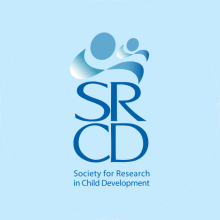May 2011 Spotlight on the SRCD Policy Fellow: Michelle Sternthal, Ph.D.
2010-2011 Federal Executive Branch Policy Fellow
This past year, I have had the privilege to work in the Department of Housing and Urban Development, in the Office of Policy, Development and Research, as my SRCD fellowship placement. At first glance, this may seem surprising. What is a public health researcher whose work focuses on childhood health disparities doing at HUD?
But, from a public health perspective, this unconventional match is ideal. My research over the last seven years taught me that medical care alone will not solve the problem of health inequalities in our nation. Eliminating health disparities requires that policy makers stretch beyond the traditional focus of healthcare and tackle the broader, nonmedical “social” factors, such as neighborhood safety, housing, and food access that create the conditions for a healthy life. What better place to apply these lessons than at HUD?
In truth I could not have joined HUD at a more opportune time. The newly released Strategic plan, under Secretary Donovan, identified two health-related priority goals: to use housing as a platform to improve quality of life and to create inclusive and sustainable communities. With this leadership has come an unprecedented opportunity to work on the intersection of housing, neighborhood development, and health.
Given my training in public health and sociology, I have assumed the role as PD&R point-person on health-related policy. Because health is a relatively new direction for HUD, a significant portion of my work has focused on education-- guiding conversations on how health fits within the overarching departmental initiatives; and breeding health-related capacity within my division. Operationally, my work has consisted of three broad tasks.
First, I provide content expertise and a “public health lens” to policy analysis and research, and evaluation. For example, I have worked to help identify ways HUD policy can facilitate healthy living through its affordable housing programs, community development, and sustainability investments. Additionally, I have helped select relevant health measures and metrics for research proposals, notices of funding, and evaluation studies. I have also presented overlooked public health research on given areas of interest (i.e., the mental health effects of housing insecurity or overcrowding).
Second, I have acted as a “health consultant” to other divisions and offices within HUD. For example, I am serving as the PD&R representative for a newly created Health Council, tasked with coordinating all health-related activities at HUD. I am in the process of designing a webinar for the Office of Sustainable Housing and Communities to teach its grantees about the relationship between sustainable planning and health. I have also reviewed grants, written white papers on asthma, and contributed to funding announcements for the Office of Healthy Homes and Lead Hazard Prevention (OHHLHP), as well as served on a HUD committee to explore smoking bans in public housing sites.
Finally, I continue to provide policy and research feedback to HUD interagency taskforces and initiatives. For example, I am a representative for HUD at the Interagency National Prevention and Health Promotion Council, a federal initiative mandated by the Affordable Care Act. Through this council, I have had the opportunity to help craft national recommendations for all federal agencies on how to improve our nation’s health. Other interagency efforts include the First Lady’s Let’s Move! campaign to end childhood obesity and the White House Federal Task Force on Environmental Health Risks & Safety Risks to Children.
The SRCD fellowship has provided me with an incredible opportunity to delve more deeply into a set of key health determinants—housing and neighborhoods—that are often overlooked in traditional health policy conversations. As the year comes to a close, I have only just begun to understand the myriad ways housing policies, development initiatives, and housing evaluations, can be catalyzed to improve population health. I look forward to renewing my fellowship for another year to further exploring these critical connections.
